You’re doing everything right—or so you thought. You’ve swapped fast food for fresh produce, opted for plant-based snacks, and filled your pantry with organic staples. But what if some of the very foods you’ve chosen to fuel your body are quietly introducing something far less wholesome? Enter microplastics: tiny, synthetic fragments now turning up not just in oceans and soil, but alarmingly, in the foods many of us consider the gold standard of health.
From bottled water to sea salt, apples to ready-to-eat salads, these invisible invaders are showing up in unexpected places. Studies have found them in rice, dairy, tea bags, and even honey. And we’re not talking trace amounts—one report revealed a single liter of bottled water can contain hundreds of thousands of plastic particles. The scary part? These fragments are so small they often bypass traditional filters and settle quietly into your system over time, raising concerns about long-term health impacts like hormone disruption, inflammation, and cellular damage.
But don’t panic—or toss out your entire grocery haul. Awareness is the first step toward smarter choices. Once you know where microplastics are hiding, it’s surprisingly easy to pivot. Many of these foods still have a place on your plate—just with a little extra care in how they’re sourced, packaged, or prepared. For every contaminated item, there’s a simple, satisfying swap or fix that lets you keep your wellness goals intact while minimizing your exposure.
This list reveals the 14 biggest microplastic offenders hiding in your “healthy” routine—and the no-stress ways to cut them out. If you’re serious about clean eating in a not-so-clean world, this is your ultimate wake-up call—plus your practical path forward. Let’s dive in.
1. Carrots
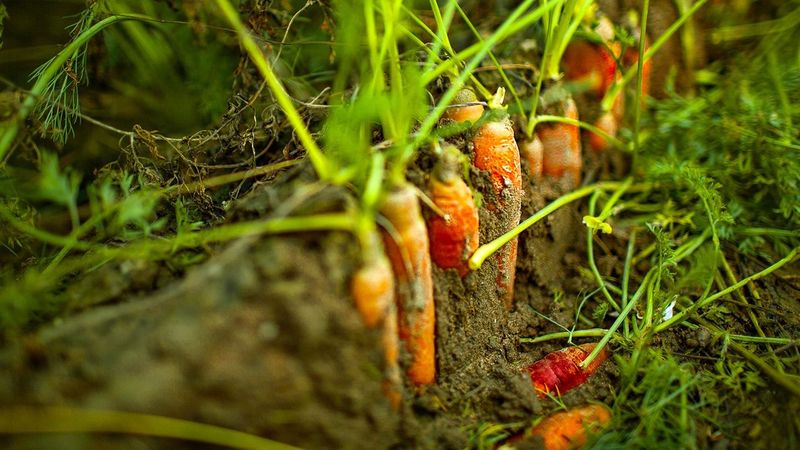
Those bright orange root vegetables in your crisper drawer might be harboring an unwanted secret. Carrots absorb microplastics through their roots as they grow in contaminated soil and water.
The very nature that makes carrots nutritional powerhouses—their ability to draw nutrients from soil—also makes them vulnerable to plastic pollution. Farmers using plastic mulch or irrigating with contaminated water unknowingly contribute to the problem.
The fix? Buy organic carrots from local farms with sustainable practices, or grow your own in controlled soil. Peeling helps reduce exposure, removing the outer layer where microplastics concentrate most.
2. Plant-Based Nuggets
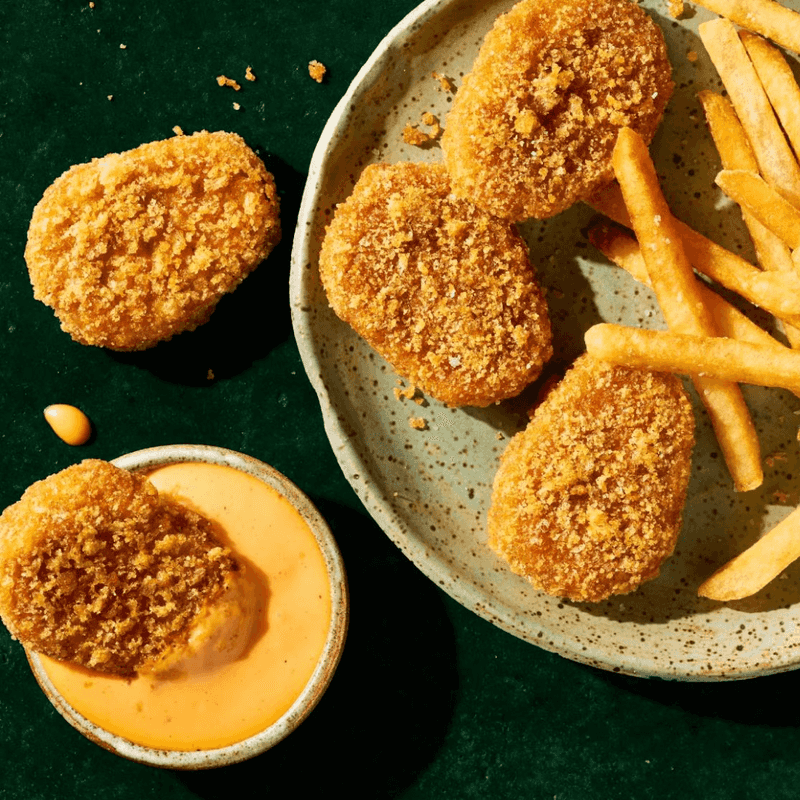
Marketed as healthier alternatives to meat, plant-based nuggets harbor approximately 0.32 microplastic particles per gram. The culprit? Processing methods and plastic packaging that shed tiny fragments into these seemingly virtuous meat substitutes.
Many manufacturers use high-heat processing while these foods contact plastic equipment. The irony doesn’t escape health-conscious consumers who choose these products to reduce their environmental footprint, only to consume microplastics instead.
Seek brands using minimal plastic in production and packaging. Better yet, make your own plant-based proteins at home using whole ingredients like lentils, beans, and mushrooms for truly clean eating.
3. Apples

An apple a day keeps the doctor away—but what about the microplastics? These beloved fruits can contain over 100,000 plastic particles per gram, absorbed through the tree’s root system from contaminated soil and water.
Apple trees have extensive root networks that efficiently draw up water and nutrients—unfortunately, this includes microplastics. The particles travel through the vascular system and eventually concentrate in the fruits we eat.
Reduce exposure by thoroughly washing apples with baking soda solution (1 tablespoon per liter of water). Choose organic apples from smaller orchards that avoid plastic mulch. Peeling helps too, though you’ll lose some nutrients in the process.
4. Rice
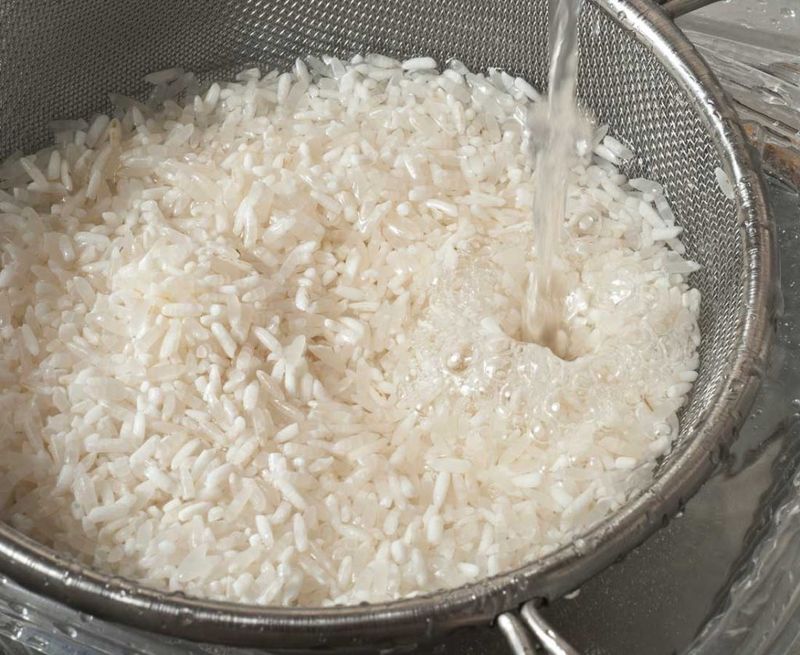
That steaming bowl of rice contains more than just carbohydrates. Regular rice contains about 3-4 mg of plastic per 100 grams, while instant varieties can contain up to a shocking 13 mg per serving.
Rice plants absorb microplastics from irrigation water and contaminated fields. Processing and packaging add another layer of exposure. Instant and microwaveable varieties suffer the most contamination due to their plastic packaging and processing methods.
Rinse rice thoroughly before cooking to wash away some surface contaminants. Choose organic rice sold in cloth or paper packaging. Traditional cooking methods using ceramic or stainless steel cookware instead of plastic rice cookers can further reduce exposure.
5. Bottled Water
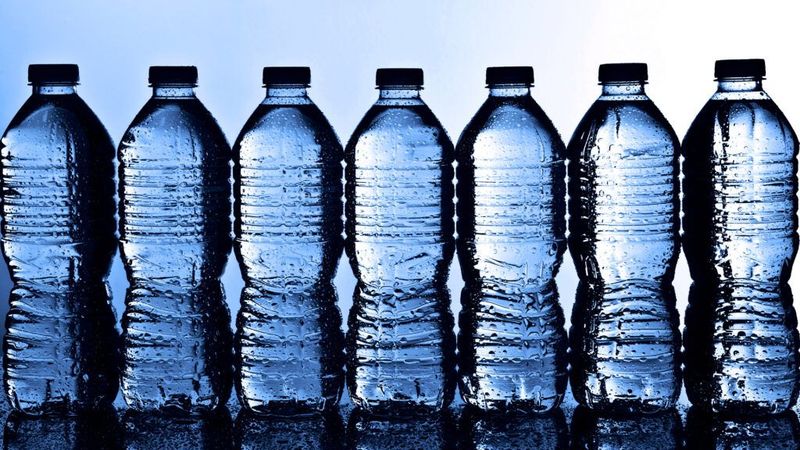
That convenient bottle of water might quench your thirst while delivering roughly 240,000 plastic particles per liter—mostly invisible nanoplastics smaller than a human cell. Talk about a trojan horse of hydration!
Heat and sunlight accelerate the breakdown of plastic bottles, releasing more particles into the water. The longer water sits in plastic, especially in warm conditions, the greater the contamination becomes.
Invest in a quality water filter and stainless steel or glass reusable bottles. If you must buy bottled water, choose glass bottles and avoid leaving plastic bottles in hot cars or direct sunlight. Your body—and the environment—will thank you.
6. Ready-to-Eat Salads

Those grab-and-go salads in plastic clamshells offer convenience at a hidden cost. The very containers designed to keep your greens fresh are shedding microplastics directly onto your supposedly healthy lunch.
Friction between the salad and container, especially during transport, causes plastic particles to flake off. The acidic nature of dressings can accelerate this process, increasing contamination levels by the time you fork into your meal.
Buy whole vegetables and prepare salads at home, storing them in glass containers. If convenience is necessary, transfer store-bought salads to your own container immediately, and consider bringing a reusable container to salad bars rather than using their disposable options.
7. Seafood
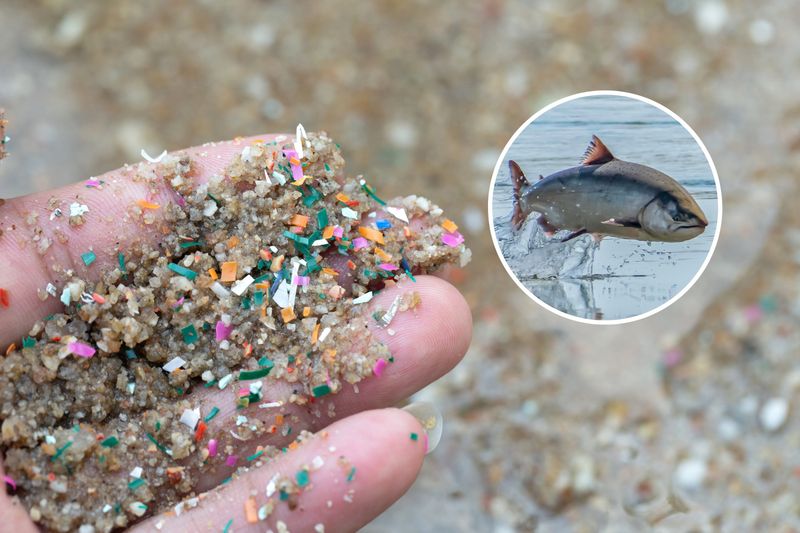
Seafood lovers face a particular challenge—marine creatures absorb microplastics from polluted waters, with shellfish delivering approximately 11,000 particles annually to regular consumers. Our oceans have become plastic soup, and marine life can’t help but ingest these particles.
Filter-feeding shellfish like mussels and oysters are especially vulnerable, as they process large volumes of water. Fish accumulate microplastics in their digestive tracts and gills, which often make their way to our plates.
Choose seafood from less polluted waters when possible. Removing the digestive tracts of fish before consumption helps reduce exposure. Consider eating lower on the seafood chain occasionally, as smaller fish generally accumulate fewer contaminants.
8. Pink Himalayan Salt
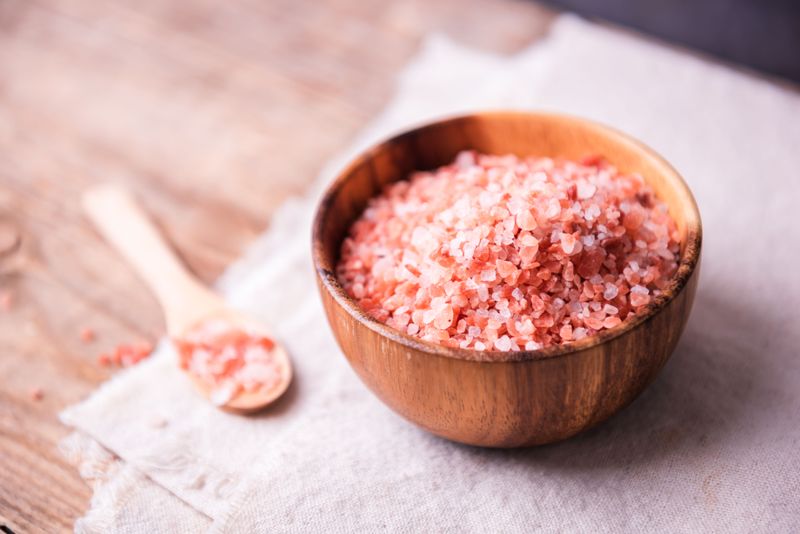
Those pretty pink crystals marketed as pure and natural actually contain more microplastics than ordinary refined table salt. The irony stings like salt in a wound—people pay premium prices for what they believe is a cleaner product.
Sea salts generally contain more microplastics than rock salt due to ocean pollution. Despite marketing claims about purity, Himalayan salt forms in areas increasingly affected by environmental contamination and plastic pollution in water sources.
Look for verified rock salt from ancient deposits formed before the plastic era. Consider using salt with larger crystals that you grind yourself, as they typically undergo less processing and packaging that could introduce additional microplastics.
9. Processed Dairy
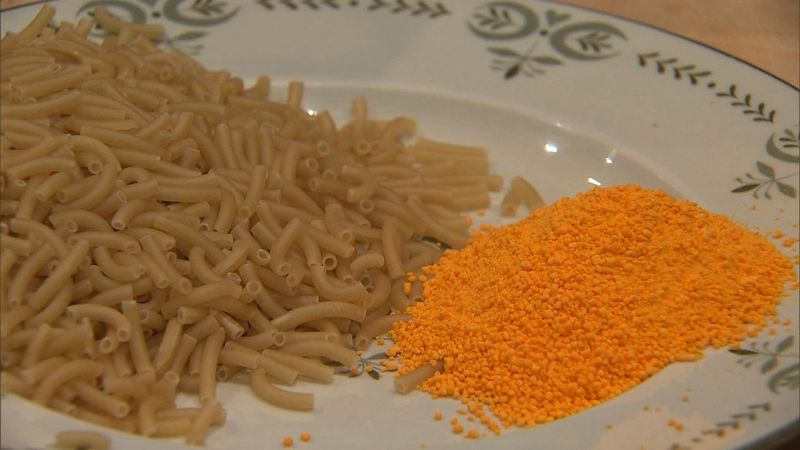
Powdered cheese products and conventional milk contain surprisingly high levels of microplastic contamination. The bright orange powder coating your favorite snacks brings more than just flavor to the table.
Dairy processing equipment made with plastic components sheds particles during the high-heat pasteurization process. Products requiring more processing steps, like cheese powders, accumulate more contamination along the production line. Even milk packaging leaches particles into the liquid.
Choose minimally processed dairy from glass bottles when possible. Grate your own cheese rather than buying pre-shredded varieties coated in anti-caking agents. Consider making simple cheese sauces from scratch instead of using powdered mixes for macaroni and cheese.
10. Tea in Nylon Bags
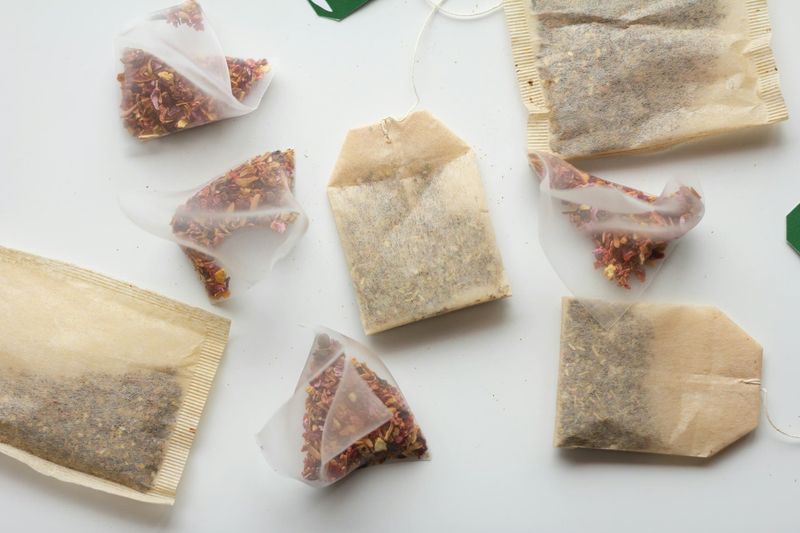
Your soothing cup of tea might be serving up to 11.6 billion microplastics and 3.1 billion nanoplastics per bag. Those silky pyramid tea bags, marketed as premium products, are actually made from nylon or PET plastic that breaks down in hot water.
When hot water hits these plastic mesh bags, they release particles directly into your brew. The hotter the water and longer the steep, the more plastic leaches into your cup—exactly the opposite of the natural experience tea drinkers seek.
Switch to loose leaf tea steeped in stainless steel infusers or paper tea bags verified to be plastic-free. Check packaging carefully—many paper-looking bags actually contain plastic fibers for heat sealing.
11. Seaweed
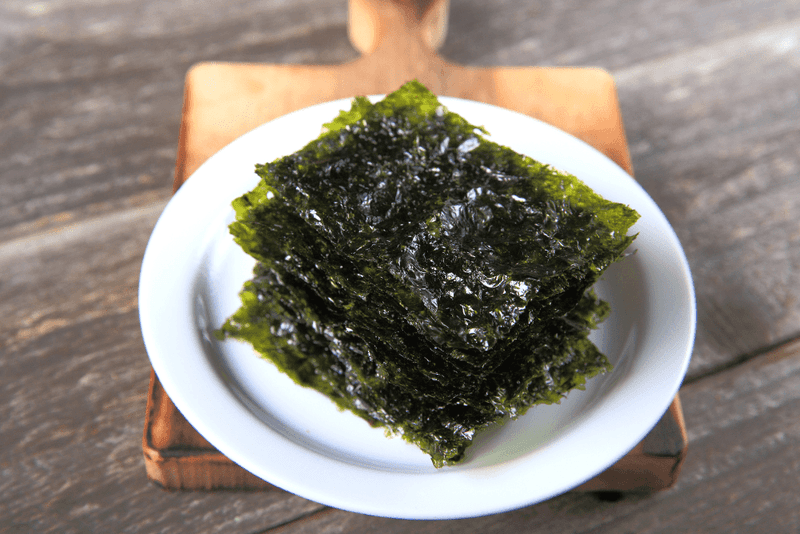
Seaweed’s superfood status comes with a catch—microplastics cling tenaciously to its fibers, resisting washing and potentially contributing to about 13% of your annual microplastic intake. The very texture that makes seaweed nutritionally valuable also makes it a magnet for plastic particles.
Marine algae has a large surface area with sticky compounds that attract and hold plastic particles. Even thorough washing can’t remove all contaminants embedded in the seaweed’s structure.
Source seaweed from cleaner waters when possible, particularly from companies that test for contaminants. Consider cultivated seaweed grown in controlled environments rather than wild-harvested varieties from potentially polluted coastal areas.
12. Honey
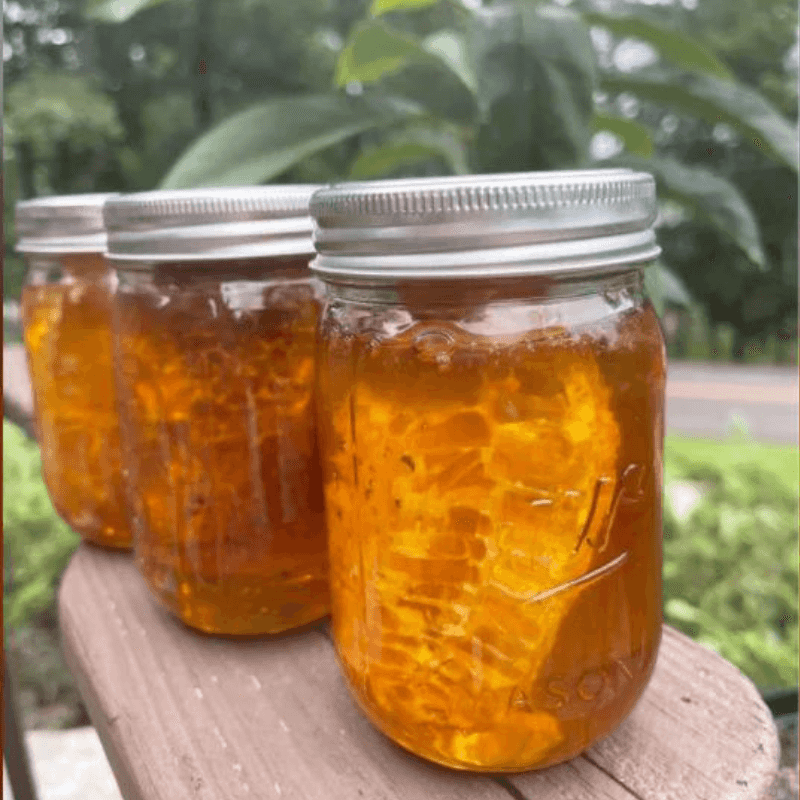
The golden sweetener in your tea harbors an unexpected ingredient—microplastics collected by bees along with pollen, especially in urban areas. These industrious insects unintentionally gather plastic particles during their foraging trips.
Bees collect whatever airborne particles stick to their fuzzy bodies, including microplastics floating in the air. Urban hives show higher contamination levels due to greater plastic pollution in city environments.
Support local beekeepers from rural areas with less industrial activity and plastic pollution. Raw, unfiltered honey from known sources tends to have less processing and packaging that could introduce additional contamination. Consider honey sold in glass jars rather than plastic containers.
13. Olive Oil
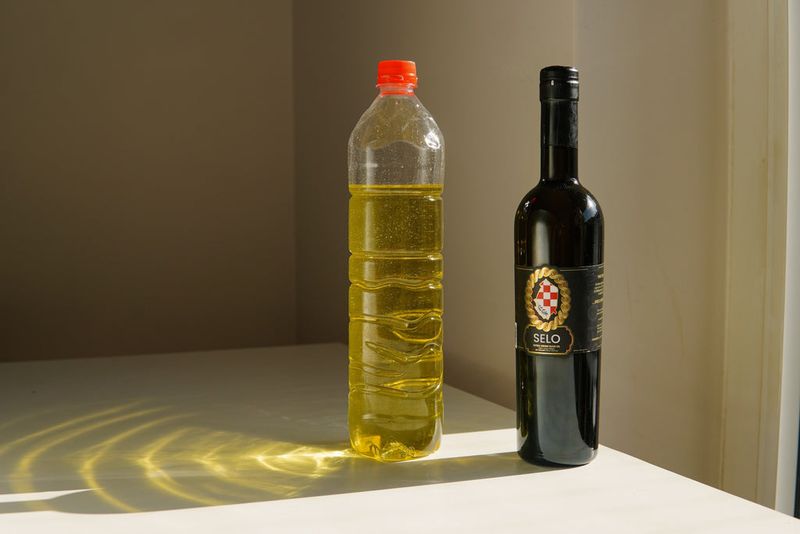
Extra-virgin olive oil, the cornerstone of Mediterranean diets, isn’t immune to plastic contamination. A 2025 study found microplastics in every sample tested, regardless of bottle type or quality level.
The oil’s production process introduces contamination through plastic equipment, while storage containers—even glass ones with plastic caps or pour spouts—add more particles over time. The oil’s fatty composition readily absorbs these contaminants, making them particularly difficult to avoid.
Choose oils in dark glass bottles with minimal plastic components. Store away from heat and light to prevent accelerated breakdown of any plastic parts. Buy smaller quantities that you’ll use quickly rather than larger bottles that sit longer, allowing more time for contamination.
14. Eggs

Your morning scramble comes with approximately 11.7 microplastic particles per egg, with higher concentrations found in the nutritious yolks. Who knew those protein-packed orbs could harbor such tiny invaders?
Chickens consume microplastics through feed and water, which then accumulate in their developing eggs. Plastic nest boxes, feeders, and water containers in commercial operations contribute additional contamination. The fat-rich yolk attracts and concentrates plastic particles.
Source eggs from small farms using metal or wooden equipment instead of plastic. Pasture-raised hens generally have less exposure to plastic contamination than factory-farmed birds. Raising backyard chickens gives you complete control over their environment and feed quality.
Leave a comment